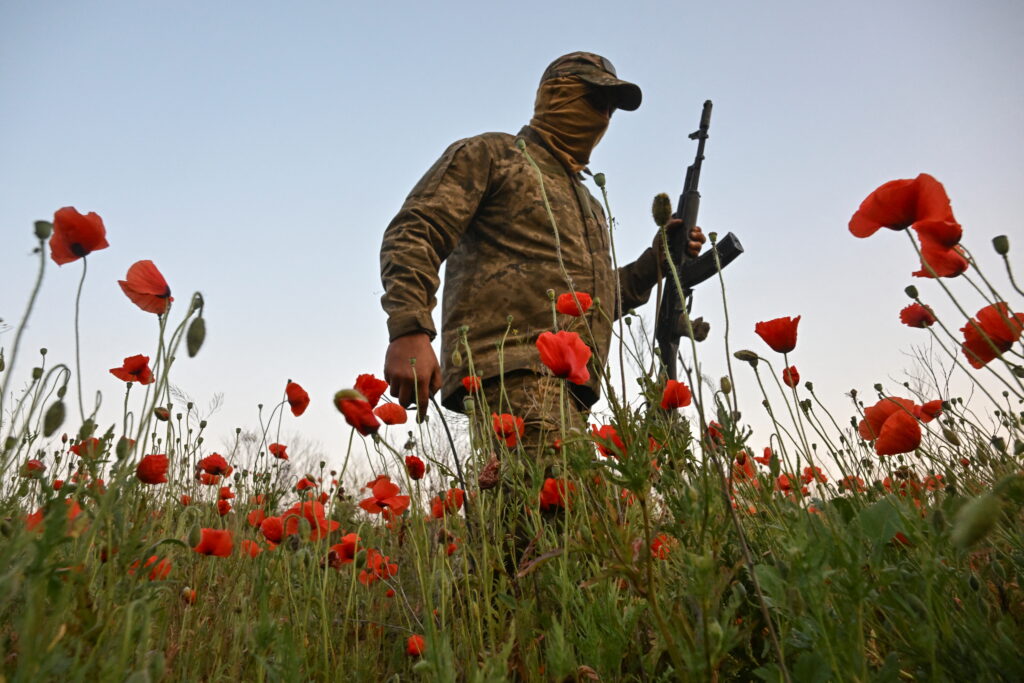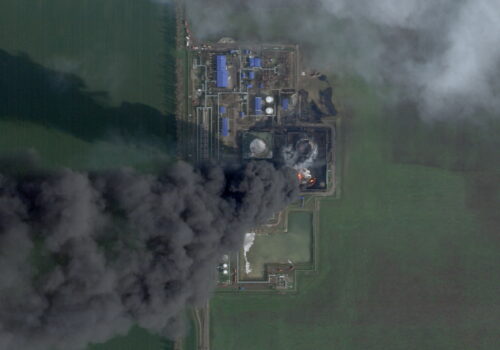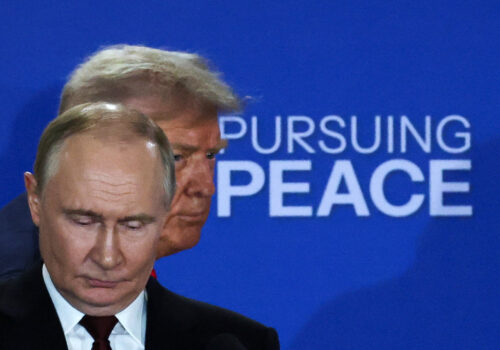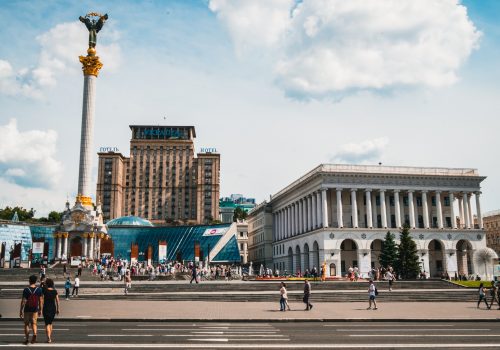As US-led efforts to end the Russian invasion of Ukraine struggle to gain momentum, Vladimir Putin’s latest territorial demands include the surrender of strategically vital and heavily fortified Ukrainian land in the east of the country. Moscow is calling on Kyiv to unilaterally withdraw from the approximately one-third of Donetsk province that remains in Ukrainian hands as part of any peace deal. In other words, Putin aims to secure territory at the negotiating table that his army has been unable to conquer in more that three and a half years of full-scale war.
The northern third of the Donetsk province is the last remaining part of eastern Ukraine’s industrial Donbas region that is still under Kyiv control. It has been at the epicenter of Putin’s invasion ever since the onset of Russian aggression more than a decade ago in 2014, and is home to Ukraine’s most extensive network of fortifications. Putin’s proposed peace terms pose a series of grave political and military threats for the Ukrainian authorities.
Stay updated
As the world watches the Russian invasion of Ukraine unfold, UkraineAlert delivers the best Atlantic Council expert insight and analysis on Ukraine twice a week directly to your inbox.
Gifting Russia large swathes of unconquered territory that thousands of Ukrainians have died defending would be an extremely bitter pill for the Ukrainian population to swallow, to put it mildly. It would also be widely seen as rewarding Russia for launching the largest European war since World War II. This would legitimize Putin’s decision to invade Ukraine and set the stage for further Russian aggression.
Even if Ukrainian President Volodymyr Zelenskyy was personally inclined to appease Putin, he does not constitutionally have the authority to cede land. Instead, changes to Ukraine’s borders must be agreed via a national referendum. Any indication that Zelenskyy favored accepting Putin’s territorial demands would likely provoke strong domestic opposition. This would potentially destabilize Ukraine, creating a range of opportunities for Russia to exploit. A weakened and divided Ukraine would be far more vulnerable on the battlefield and in the diplomatic arena.
Alternatively, if Zelenskyy maintains his current position and continues to rule out Putin’s Donbas land grab, the Kremlin will likely use this rejection to poison the Ukrainian leader’s relations with US President Donald Trump by portraying Ukraine as the main obstacle to peace. Putin would no doubt welcome the opportunity to drive a wedge between Kyiv and Washington as Moscow seeks to isolate Ukraine and reduce international support for the Ukrainian war effort.
Militarily, the surrender of the northern Donetsk region would place large parts of eastern Ukraine at risk of being overrun by the advancing Russians. The region currently serves as a bastion against Russia’s invasion. While there is no guarantee that fortified areas will be able to hold out indefinitely against Russian attacks, Putin would almost certainly be forced to sacrifice huge numbers of troops before achieving his goal. In this sense, the Donbas fortress belt is one of Ukraine’s trump cards in its war of attrition against Russia.
Eurasia Center events

Over the past eleven years, Ukraine has constructed a range of defensive fortifications in the northern Donetsk region centered around the cities of Sloviansk and Kramatorsk. The area has served as a logistical hub for the Ukrainian war effort and has been a focus of efforts to develop defense in depth. If Ukraine retreats from this stronghold, Russia would be able to secure a vital staging post for further advances while avoiding hundreds of thousands of casualties. The Ukrainian military would then be forced to hastily construct new fortifications in significantly less favorable terrain.
With current military technologies favoring defensive operations, Ukraine’s fortress belt in the northern Donetsk region represents a formidable obstacle for Putin’s invading army. The ubiquity of drones above the battlefield makes large-scale mechanized breakthroughs extremely challenging to accomplish, leaving Russia to rely on small groups of infantry to infiltrate Ukrainian forward positions. This approach can be successful against thinly defended and hastily constructed defensive positions, but is unlikely to prove effective against the most heavily fortified sector of the Ukrainian front lines.
Ukrainians recognize the need for concessions, with a majority acknowledging that areas of the country currently occupied by Russia will likely remain under Kremlin control as part of any peace settlement. Crucially, however, almost nobody in Ukraine believes that handing over additional unconquered territory in the Donbas would satisfy Putin’s imperial ambitions or remove the threat of future Russian invasions. On the contrary, most Ukrainians agree that this would only encourage the Kremlin and embolden Putin to go further. He would be able to do so from a position of strength, having secured Ukraine’s fortress belt without the prolonged fighting that has proved necessary in order to secure far smaller territorial gains elsewhere in eastern Ukraine.
From both a military and political perspective, it would make little sense for Ukraine to accept Russia’s territorial demands and voluntarily surrender the northern Donetsk region as part of a peace deal. As long as Kyiv continues to control the Donbas fortress belt, there is a good chance that the Ukrainian military can turn the entire region into a graveyard for Putin’s invading army. Meanwhile, a withdrawal would leave large parts of Ukraine dangerously undefended and dramatically undermine faith in the country’s leadership.
Even if Putin concentrates his best military units in a bid to complete the conquest of the Donbas region, he would almost certainly be forced to pay a very high price for any significant advances. Indeed, the Russian army may become bogged down for years in bitter fighting that would dwarf earlier battles of attrition and could conceivably change the entire course of the war. This is exactly why Putin is pushing for Ukraine to surrender the region without a fight, and helps explain why Ukraine is reluctant to do so.
Mykola Bielieskov is a research fellow at the National Institute for Strategic Studies and a senior analyst at Ukrainian NGO “Come Back Alive.” The views expressed in this article are the author’s personal position and do not reflect the opinions or views of NISS or Come Back Alive.
Further reading
The views expressed in UkraineAlert are solely those of the authors and do not necessarily reflect the views of the Atlantic Council, its staff, or its supporters.

The Eurasia Center’s mission is to enhance transatlantic cooperation in promoting stability, democratic values, and prosperity in Eurasia, from Eastern Europe and Turkey in the West to the Caucasus, Russia, and Central Asia in the East.
Follow us on social media
and support our work
Image: A service member of the 31st Separate Mechanized Brigade of the Ukrainian Armed Forces is seen on a front line, amid Russia's attack on Ukraine, in Zaporizhzhia region, Ukraine. June 6, 2025. (REUTERS/Stringer)





